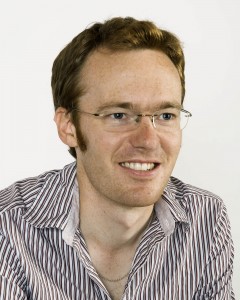
Population growth and rapidly increasing levels of urbanisation in many earthquake-prone regions of the world are contributing to accelerating levels of risk for billions of people. Many experts predict that in the coming decades the death tolls in some earthquakes could rise above one million people. Mitigating the risks relating to earthquakes involves two separate processes: the hazard and risk posed by earthquakes must be quantified, and then steps must be taken to reduce the risk. My work falls within the first of these areas: understanding the hazard posed by the active fault-lines within the Earth’s crust that produce earthquakes when they rupture.
Earthquakes are preceded by a long period of slow bending of the rocks surrounding fault zones, until the stresses build up to a high enough level to break the rocks in an earthquake. Depending on the fault zone in question, this process can take from decades to upwards of tens of thousands of years. Such long timescales mean that we have only seen earthquakes occur on a relatively small proportion of the planet’s active faults during recorded human history. A crucial aspect of research into earthquake hazard therefore involves attempting to identify active fault-lines that have not ruptured in recent earthquakes, but will do so at some time in the future. We can study such faults by using accurate surveying methods, often based upon satellite data, to map the slow bending of the rocks before earthquakes. We can also search for the tell-tale signs of past events that are preserved in the landscape. Trenches dug through old earthquake ruptures can reveal a fault’s recent earthquake history. These methods do not allow us to predict when an earthquake will occur, but they do give us insights into the locations and likely magnitudes of future events. This information can be used as a basis for regulating and strengthening buildings, and other aspects of increasing resilience, in order to radically reduce the numbers of earthquake-related deaths. Chile, Japan, and California are amongst the areas that have successfully applied this model to make large steps forwards in protecting people and infrastructure.
Unfortunately, work to identify and study active faults is not a complete solution to the problem of quantifying earthquake hazard. Each fault takes a considerable amount of time to find, map, and analyse, so in many areas of the world only a small proportion of the active faults have yet been studied. Furthermore, although many faults can be studied in this manner, quirks of the local geology can make some faults invisible to presently-available techniques (e.g. because they are buried beneath sediment deposited by the outwash of a large river). An open question concerns how to assess hazard and risk in such areas. One option would be to assume that all areas in the surroundings of known faults experience similar levels of risk due to further, unrecognised, faults. This is a relatively cautious approach, based upon detailed science on the faults that are visible. However, the cost of mitigating earthquake hazard in large areas where it may not be necessary will inevitably place a burden on resources. Alternatively, ignoring the hazard posed by hidden faults can result in the devastating loss of life due to earthquakes in unexpected and unprepared regions. There may be an optimal solution between these two extremes, but to find it will require close collaboration between geoscientists, policy makers, and governments.
Alex Copley is a university lecturer in the Department of Earth Sciences in the University of Cambridge, and a fellow of Robinson College. His research concerns understanding the active tectonics of the continents, focussing on Europe, Asia, and east Africa. He is a member of “Earthquakes without Frontiers” (http://ewf.nerc.ac.uk/) and the “Centre for Observation and Modelling of Earthquakes, Volcanoes, and Tectonics” (COMET; http://comet.nerc.ac.uk/), two research partnerships that work in the area of earthquake hazard and risk.